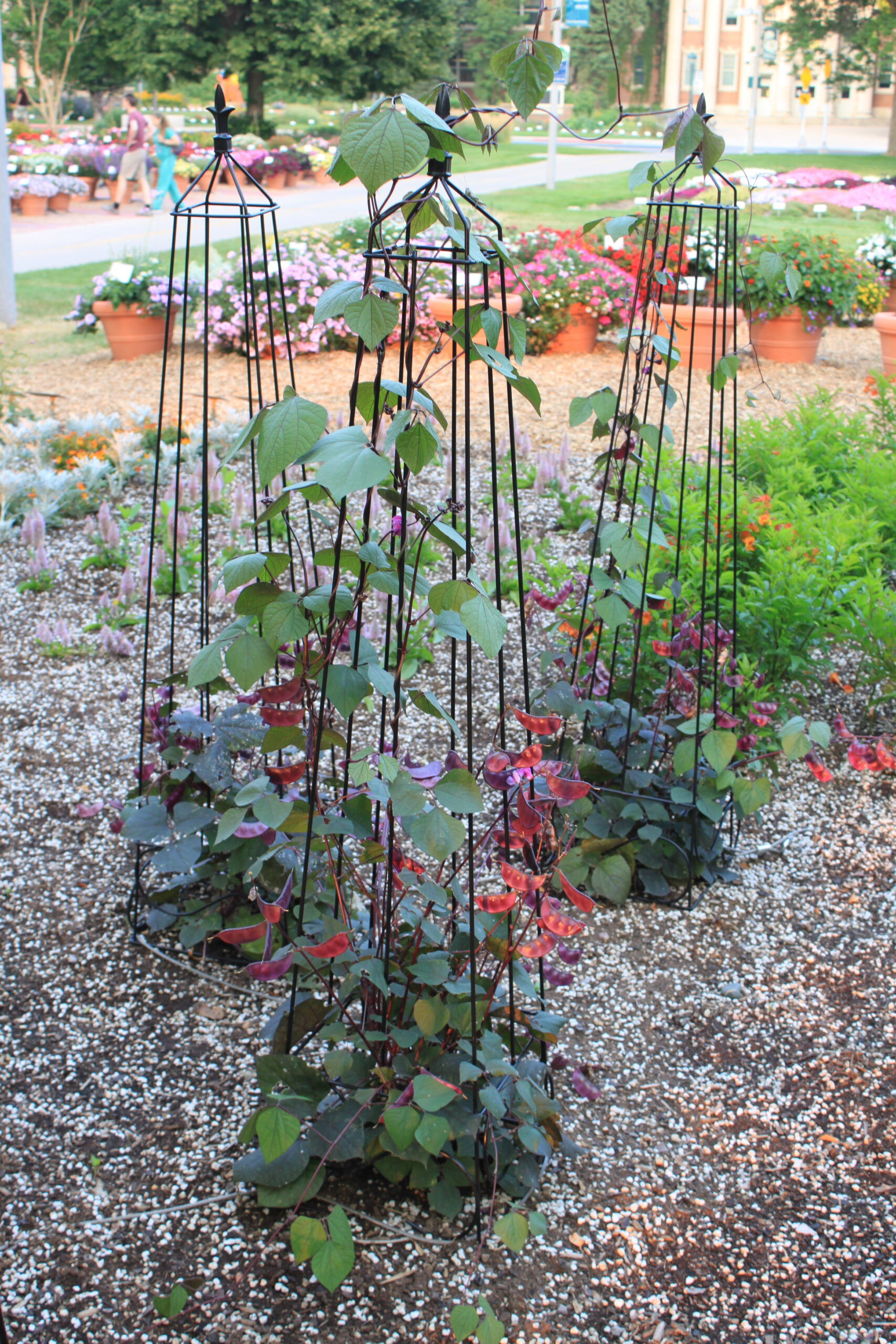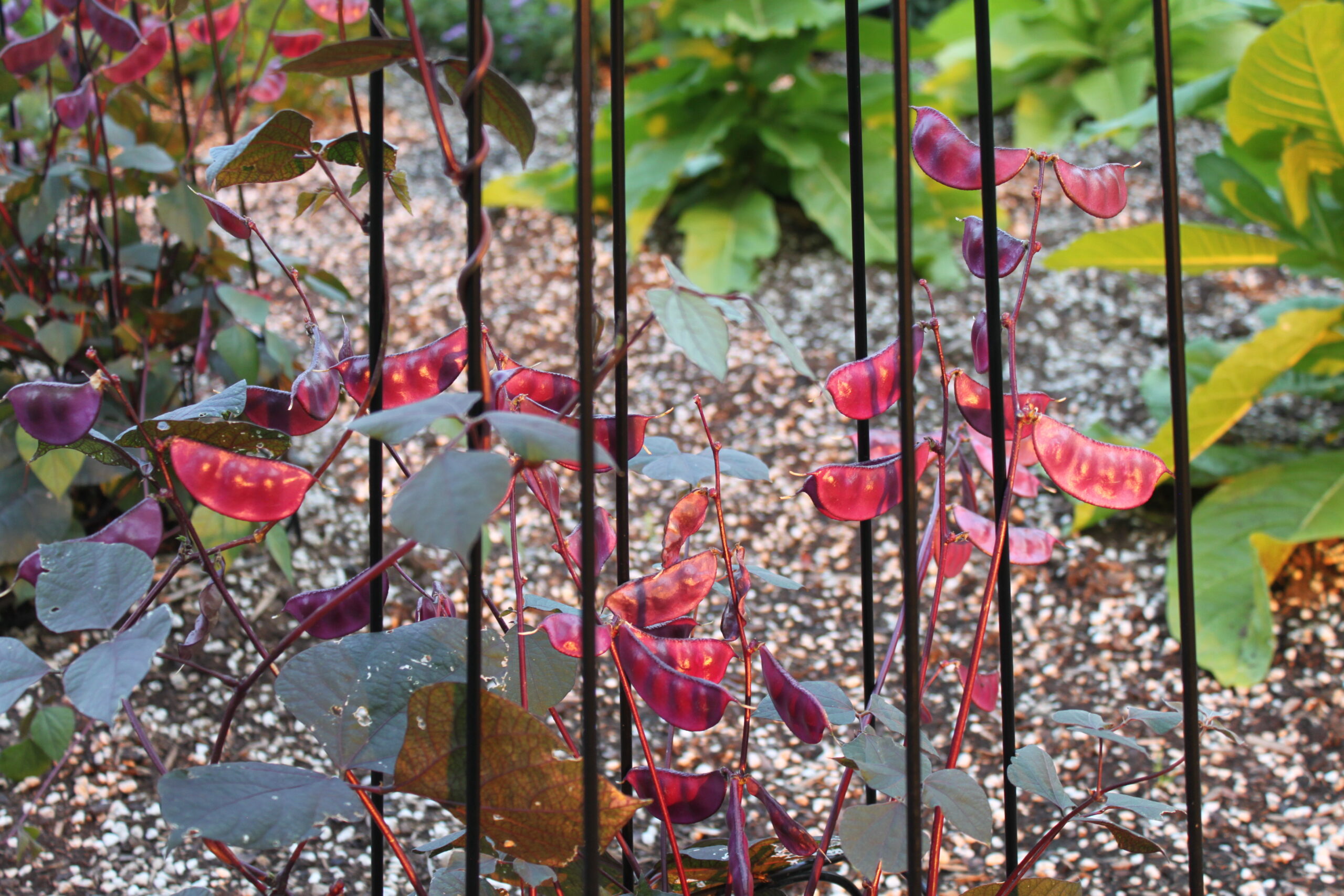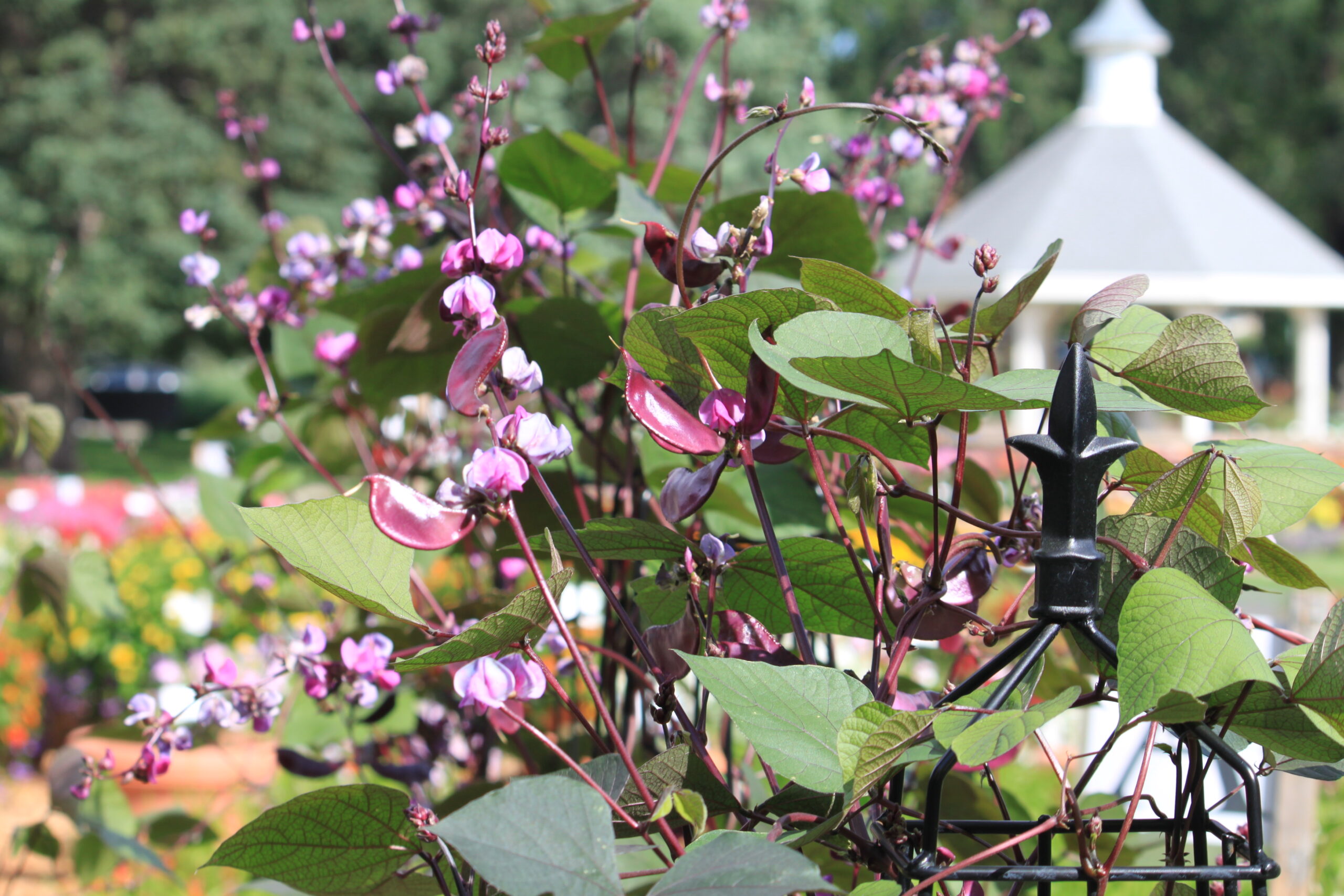


Why are vines a good choice?
Annual vines are easy to grow in flower beds, hanging baskets, window boxes or trellised planters. They transform unattractive areas, and provide quick, inexpensive solutions to many landscape problems. Use of annual vines is limited only by your imagination, and you can vary the flower color display every year.
Vines add a vertical dimension to make small spaces seem larger, and they provide privacy and cooling shade. Most annual vines won’t cling to a brick or wooden wall, but you can use such climbing aids as wire fences or trellises to support them.
What are the most successful types of vines?
You might want to try several annual vines including the Black-Eyed Susan (Thunbergia alata), Cup-and-Saucer (Cobaea scandens), and Moonflower (Ipomoea alba).
The Black-Eyed Susan vine grows to a height of seven feet in partial to light shade and moist, well-drained soil. It has yellow, orange or white flowers with dark centers.
Cup-and-Saucer vine grows 20 feet in semi-shady to sunny locations and moist soil. They bear reddish-purple flower cups in green saucers.
The Moonflower vine may reach 20 feet in a growing season.The vine requires a sunny location and moist, well-drained soil. The large, fragrant white flowers open at night and close by mid-day.
You also might want to consider Nasturtium, Scarlet Runner Bean, Hyacinth Bean, Sweet Potato vine, Hops and Morning Glory.
Whatever the intended use or location, there’s an annual vine to suit your situation.



